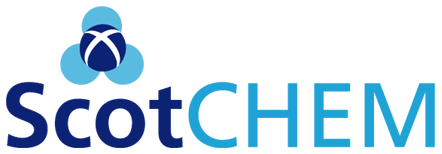Guiding catalyst selectivity using biological architecture
Main list: St Andrews
Abstract
Guiding catalyst selectivity using biological architecture Dr Amanda Jarvis, University of Edinburgh Artificial metalloenzymes aim to combine the benefits of natural enzymes (selectivity, rate enhancement) with the scope of reactions provided by traditional transition metal chemistry (both reactions inspired by nature e.g. oxidations and reactions never s een in nature i.e. Pd cross -coupling reactions). 1 Proteins containing apolar cavities and tunnels have been utilised as scaffolds in which transition metal complexes can be introduced to build up catalysts that provide linear selectivities and improve subs trate turnover through enhancing substrate binding. 2 A number of different methods can be utilised to introduce the metal complex into the protein scaffold, including either introducing reactive amino acids (e.g. cysteine’s) which can subsequently be modi fied with a metal binding ligand, or directly introducing metal binding unnatural amino acids such as bipyridylalanine using amber stop codon suppression methodology. 3 In this talk, I will cover the work I have conducted towards developing artificial metal loenzymes using these methods for a range of synthetic challenges from reactions in water to C -H functionalisation.
-
Speaker
Dr Amanda Jarvis
Edinburgh Venue
Purdie
Venue Info
Theatre C
Date
May 8, 2019
Time
From: 14h00 To: 15h00
-

Sponsor
ScotCHEM
Everything that matters
Go Back
Viewed: 456 time(s)

